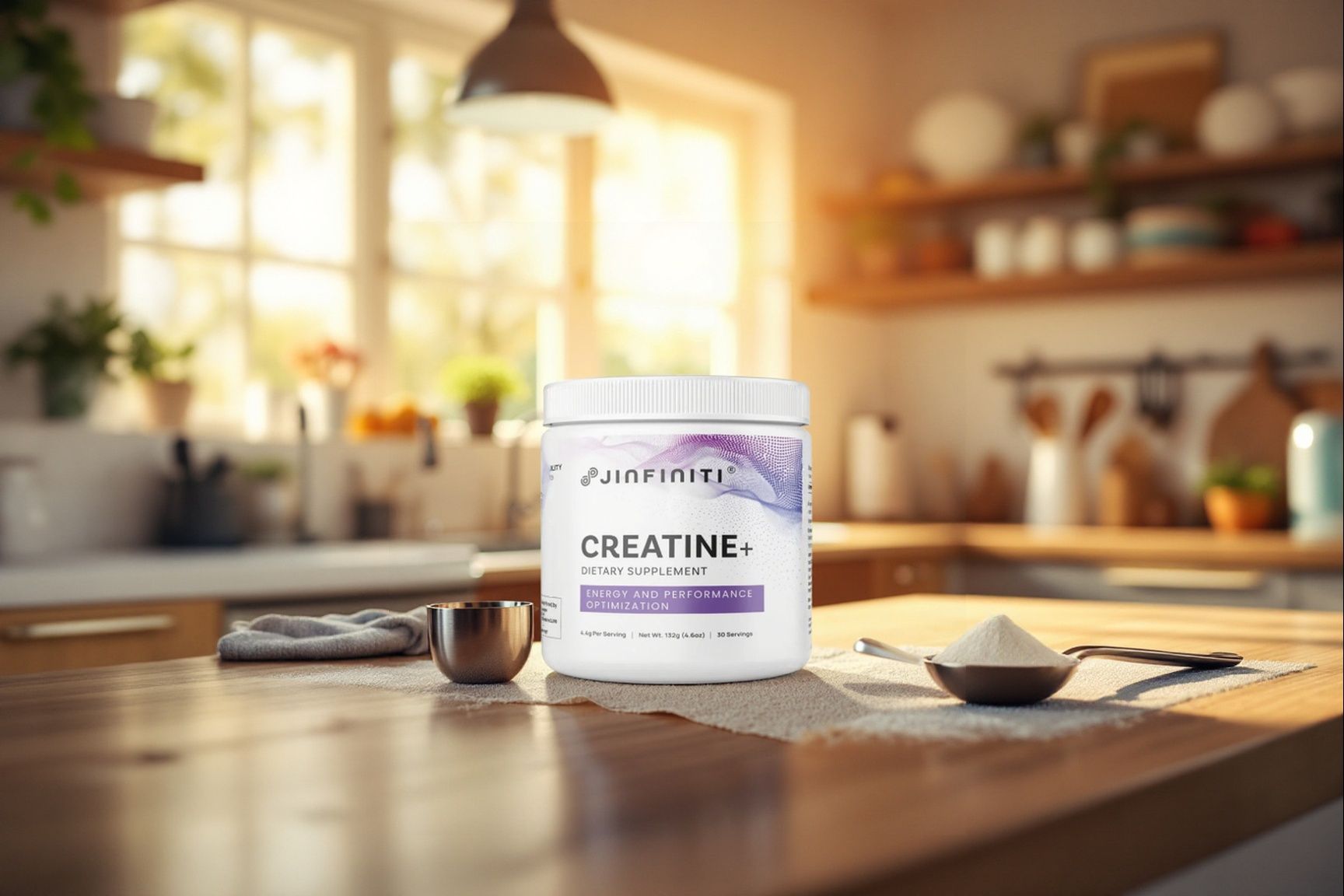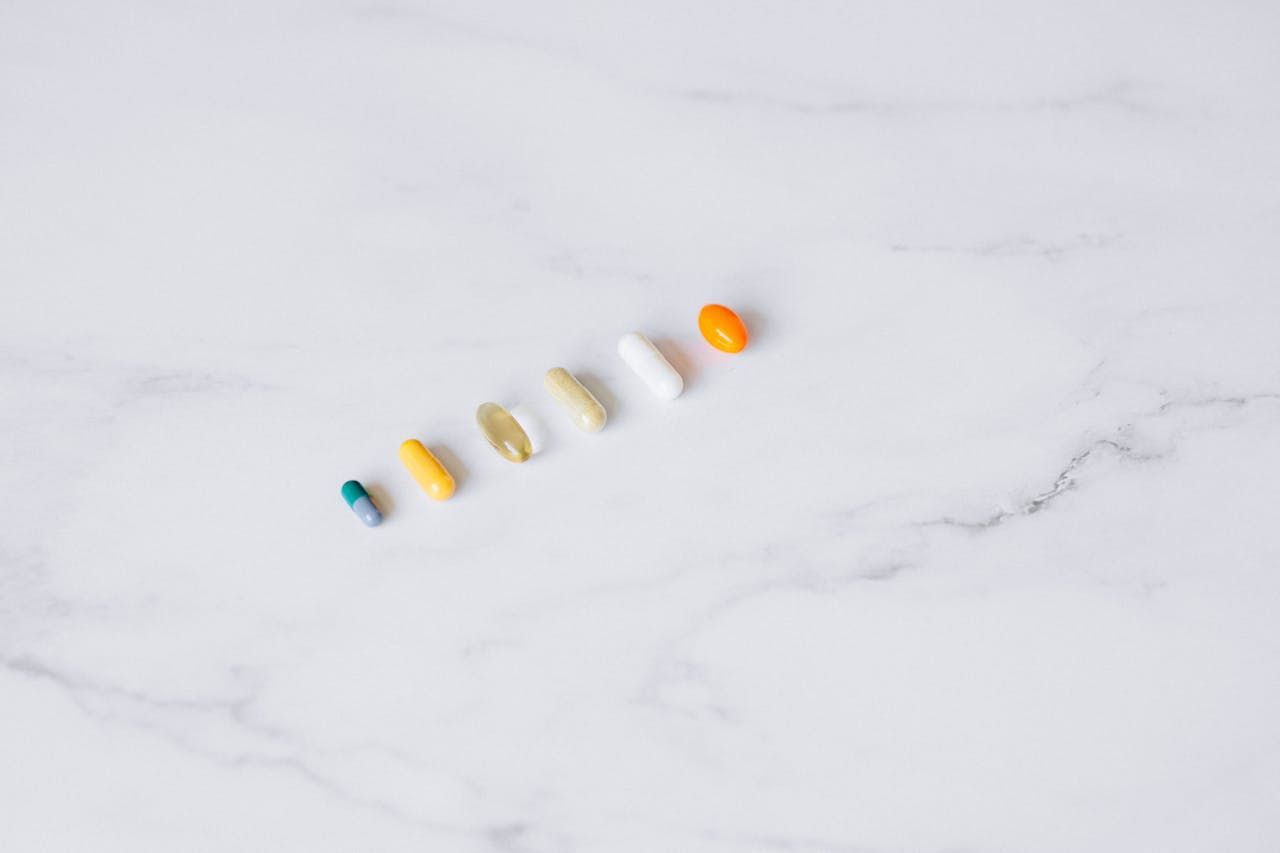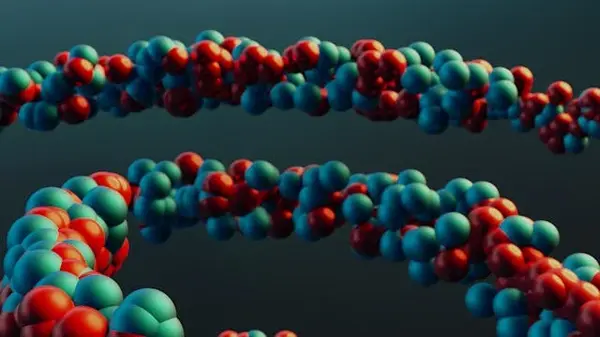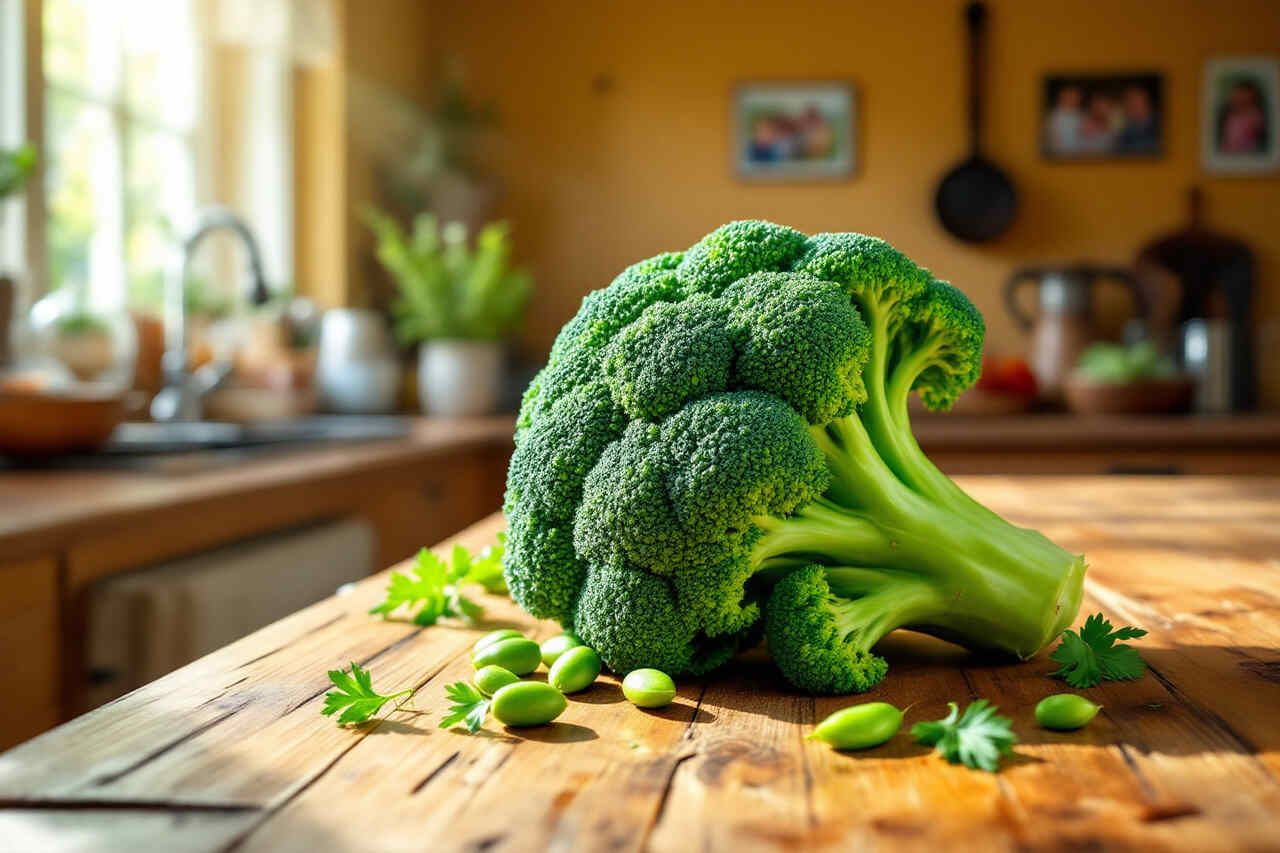Creatine Confusion: How to Choose the Best Form and Type
The supplement aisle is filled with countless creatine products—powders, pills, liquids, and formulas with scientific names.
This wide selection exists even though basic creatine monohydrate is one of the most researched supplements, with clear benefits for strength, muscle growth, and athletic performance.
Why so many options? Simple: marketing. The supplement industry thrives on creating “new and improved” formulations that promise better results but often deliver little beyond a higher price tag.
This guide cuts through the confusion to examine various creatine supplement forms, what research actually shows about how well they work, and how to pick the right one for your goals.
We’ll cover the real benefits of creatine while helping you avoid wasting money on unproven formulations.
Key Takeaways
- Creatine monohydrate is backed by 1000+ studies and consistently outperforms newer, more expensive forms
- You’ll pay 10-15 times more for alternative creatine types with no extra benefits
- Creatine supplementation leads to notable increases in muscle mass, strength, and athletic performance
- Quality matters: look for 99.5%+ purity and third-party certification when choosing a supplement
What Is Creatine and Why Does It Matter?

Creatine is a natural compound your body makes from three amino acids: glycine, arginine, and methionine. Your organs produce about 1 gram daily, and you get more from foods like red meat and seafood. A small 4-ounce steak provides roughly 1 gram. 1
Your body stores about 120-140 grams of creatine, with 95% in your skeletal muscles. 2 Inside muscle cells, creatine becomes phosphocreatine and acts like a backup battery for quick energy bursts. 3
During short, intense exercise (1-10 seconds), your muscles use up ATP (your body’s energy currency). Creatine helps regenerate ATP which can help you push harder when doing intense workouts like weightlifting or sprinting.
Research in the Journal of Strength and Conditioning Research shows creatine supplements increase strength, power, and muscle mass without adding body fat. 4
Meta-analyses have also shown that creatine, regardless of dosing strategy, enhances lean tissue mass and strength compared to placebo. 5
Bottom line: If you want more power, better performance, and faster recovery, creatine is worth considering.
Types of Creatine at a Glance

The supplement market is packed with different types of creatine, all claiming to be the best. Let’s break down the main ones and what makes them different:
Creatine Monohydrate: The Gold Standard

With over 30 years of research, creatine monohydrate stands as the most trusted form for both results and safety. Scientists have tested it in more than 1,000 peer-reviewed studies, making it the benchmark all other forms are measured against.
Real Performance Results
Taking creatine monohydrate delivers improvements you can actually see and feel:
- 5-15% increase in maximum strength (measured by 1RM tests) 6
- 8% better power output during repeated sprints 7
- 1-2 kg more lean muscle gained during 7-52 weeks of weight training 8
These benefits directly boost athletic performance, often giving you results that training alone can’t match in the same time period.
Unmatched Cost-Effectiveness
Beyond superior evidence, creatine monohydrate delivers exceptional value compared to other forms:
| Creatine Form | Average Cost Per Daily Dose | Cost Per Month |
| Monohydrate | $0.05-0.10 | $1.50-3.00 |
| HCl | $0.50-1.00 | $15.00-30.00 |
| Kre-Alkalyn | $0.70-1.20 | $21.00-36.00 |
| Ethyl Ester | $0.80-1.50 | $24.00-45.00 |
This 10-15x price gap stands out even more considering no other form has consistently outperformed monohydrate in controlled studies.
Creatine Hydrochloride and Alternative Forms

New creatine forms constantly emerge in the supplement market, each supposedly better than monohydrate. While these variants have unique chemical compositions, research typically doesn’t support claims of improved performance benefits.
Creatine HCl: Solubility Claims vs. Clinical Reality
Creatine HCL combines creatine with hydrochloric acid to improve solubility and absorption. Some claim this form works with smaller doses (usually 750mg instead of the 5g needed for monohydrate) while providing the same benefits.
But what does the research say?
A study published in Heliyon showed that while creatine HCl does break down properly in the body, it doesn’t absorb better or work more effectively at lower doses compared to creatine monohydrate. 9
Another study found that creatine hydrochloride dissolves 38 times better in water than creatine monohydrate. Despite this advantage, your body doesn’t actually absorb or use it any better. 10
At the end of the day, once it hits your digestive system, HCl breaks down into the same creatine as monohydrate, making its solubility advantage mostly irrelevant.
Creatine ATP (Disodium ATP Complex)
Creatine ATP powder mixes standard creatine monohydrate with disodium adenosine triphosphate. This combination works through two different energy pathways to boost your performance. It increases phosphocreatine reserves while also providing ready-to-use ATP.
What to know about Creatine ATP:
- Shows promise for building more strength and muscle thickness than regular creatine
- Helps improve blood flow during exercise, which may enhance nutrient delivery
- Standard dose is 3-5g creatine with 400mg disodium ATP each day
- Research points to combined benefits, with one study showing better strength and muscle gains compared to placebo 11
Buffered Creatine (Kre-Alkalyn): Stability Claims Examined
Buffered creatine, like Kre-Alkalyn, includes alkaline compounds to supposedly prevent stomach acid from breaking down. With a pH above 12, manufacturers claim it:
- Converts less to creatinine (a waste by-product)
- Works at lower doses due to higher potency
- Stays more stable during digestion
But do these claims hold up?
A comparative study in the Journal of the International Society of Sports Nutrition found that no significant difference was found in muscle creatine content between Kre-Alkalyn and CrM. 12 In fact, creatine monohydrate showed a trend toward higher increases in muscle creatine compared to the lower-dose Kre-Alkalyn group.
Once ingested, buffered creatine doesn’t provide any measurable advantage over standard monohydrate in terms of effectiveness or safety.
Creatine Ethyl Ester: Cellular Uptake Evidence
Creatine ethyl ester (CEE) was designed to be more fat-soluble. Theoretically, this should make it easier to cross cell membranes without relying on creatine transport proteins.
Marketing claims include:
- Superior muscle absorption due to enhanced membrane permeability
- Lower effective dosage requirements
- Reduced extracellular water retention
However, scientific research has disproven these claims.
Research shows creatine ethyl ester doesn’t increase muscle creatine levels as effectively as creatine monohydrate. CEE breaks down into creatinine more quickly, making it less effective than monohydrate for both muscle creatine retention and performance gains. 13
Liquid and Effervescent Forms: Stability Challenges
Pre-mixed liquid creatine and effervescent tablets may be convenient, but they come with key drawbacks:
- Creatine Breakdown: In liquid form, creatine slowly degrades into creatinine, especially at room temperature—studies show 90% degradation after 45 days. 14
- Low Concentration: Creatine’s limited solubility means these products require large liquid volumes for an effective dose.
- Stability Issues: Manufacturers must add stabilizers (often undisclosed) to slow degradation, adding uncertainty to product consistency.
For effervescent products, the acidic ingredients that create the fizz can speed up creatine breakdown before you even take it. While these products improve solubility, they don’t solve the core issue—creatine’s instability in liquid form.
Creatine Chelates
Creatine nitrate attaches nitrate molecules to creatine, possibly boosting nitric oxide levels alongside creatine’s standard benefits. This might improve blood flow and muscle pumps, though research showing clear advantages over regular creatine monohydrate is still lacking.
Creatine magnesium chelate combines creatine with magnesium to potentially enhance absorption while supporting muscle function and hydration. Some users believe this form delivers better strength gains with less water retention, though scientific evidence for these claims remains limited.
Other chelate forms like creatine citrate and creatine malate are also lacking clinical evidence for superior efficacy.
Choosing the Best Creatine Supplement

Quality creatine makes all the difference. Here’s what matters when selecting a supplement:
Quality Indicators
- Purity: 99.5%+ pure to avoid fillers and contaminants
- Verification: Look for NSF, Informed-Choice, or USP certification
- Manufacturing: GMP-certified facilities ensure consistency
- Transparency: Check for available lab reports and clear ingredient lists
- Origin: Products from USA, Germany, or Japan typically meet higher standards
The Right Form for You
While creatine monohydrate is consistently the best option for nearly everyone, consider:
- For sensitive digestion: Try micronized monohydrate first, buffered creatine as backup
- For budget concerns: Standard monohydrate powder offers best value
- For specific goals: All athletes benefit from monohydrate, varying only loading protocols
Creatine monohydrate remains the gold standard, delivering the optimal balance of effectiveness, safety, and value regardless of your specific needs.
Tips for Safely Using Creatine

Creatine is a safe supplement with solid research behind it, but many people still struggle with how to use it properly.
Our creatine starter guide walks you through the basics of dosing, timing, and managing potential side effects so you can get the most benefit with minimal discomfort.
Managing Digestive Comfort
- Divide doses throughout the day instead of taking all at once
- Take with food to slow digestion and prevent gut discomfort
- Mix thoroughly and let sit briefly for complete dissolution
- Start with small doses (1-2g) and gradually increase
- Consider micronized forms for better dissolution and gentler digestion
Safety Facts
Creatine doesn’t harm kidneys or liver in healthy individuals using recommended doses, nor does it negatively impact hormones. Those with kidney disease should always consult a doctor first.
Water and Weight
Creatine draws water into muscles (not under skin), causing a 2-4 pound initial weight gain that enhances performance. To avoid potential bloating, stay hydrated with 2-3 liters of water daily.
Dosing Guidelines
Loading Phase (Optional):
- Under 150 lbs: 15-18g daily (divided doses)
- 150-200 lbs: 20g daily (divided doses)
- Over 200 lbs: 25g daily (divided doses)
Maintenance Phase:
- Under 150 lbs: 3g daily
- 150-200 lbs: 5g daily
- Over 200 lbs: 5-7g daily
Adjust based on training intensity—higher for intense training, lower for light activity.
Improve Absorption: Take with fast-digesting carbs (30-80g) and a pinch of salt to enhance uptake and effectiveness.
Creatine for Different Populations

Creatine benefits extend beyond young male athletes to various groups with unique considerations.
Weight-Class Athletes
Weight-class competitors can strategically use creatine while managing water retention:
- Use gradual loading (3-5g daily) instead of standard loading protocols
- Supplement during off-season training periods
- Stop 2-3 weeks before weigh-ins
- Implement appropriate water management strategies
Benefits persist 4-6 weeks after discontinuation, allowing performance advantages without competition weight impacts.
Vegetarians and Vegans
Plant-based diets typically result in 10-20% lower muscle creatine stores, making supplementation particularly valuable. Vegetarians and vegans often experience more significant improvements in:
- Muscle creatine concentration
- Performance metrics
- Cognitive function
Older Adults
Creatine helps counter age-related declines in:
- Muscle function: Enhances strength retention and lean mass when combined with resistance training
- Brain health: Creatine may have nootropic benefits, supporting memory recall, recognition, and overall cognitive performance
Medical Considerations
Consult a healthcare provider before using creatine if you have:
- Kidney disorders or take kidney-affecting medications
- History of kidney stones, diabetes, liver issues, or hypertension
- Potential medication interactions (especially with pain relievers or stimulants)
- Pregnancy, nursing, pediatric needs, or heart conditions
While generally safe for healthy individuals, those with specific medical conditions should seek professional guidance.
The Final Scoop: What’s the Best Type of Creatine?

Decades of research make it clear—creatine monohydrate remains the best form of creatine. It consistently outperforms alternative forms through:
- Unmatched research validation with 1,000+ peer-reviewed studies
- Equal or superior performance outcomes in direct comparison studies
- Complete muscle saturation despite claims of enhanced absorption by newer forms
- Excellent safety profile with minimal side effects
- Superior cost-effectiveness at 10-15 times less costly than “advanced” formulations
Creatine monohydrate remains the gold standard, but new products like Jinfiniti’s Creatine ATP offer athletes a promising alternative.
This innovative formulation combines creatine monohydrate with disodium ATP, potentially enhancing strength and muscle thickness beyond standard creatine while improving blood flow to working muscles.
While the supplement industry often creates solutions for non-existent problems, some formulations like Creatine ATP represent science-backed advancements worth considering alongside traditional monohydrate.
In the end, you can’t go wrong with monohydrate, but you may want to choose based on your specific goals, training intensity, and performance needs.
Referenced Sources:
- https://www.sciencedirect.com/topics/neuroscience/creatine ↩︎
- https://pmc.ncbi.nlm.nih.gov/articles/PMC3407788/ ↩︎
- https://www.mdpi.com/2072-6643/13/8/2844 ↩︎
- https://journals.lww.com/nsca-jscr/abstract/1999/08000/long_term_effects_of_creatine_monohydrate_on.1.aspx ↩︎
- https://www.mdpi.com/2072-6643/13/6/1912 ↩︎
- https://pmc.ncbi.nlm.nih.gov/articles/PMC8228369/ ↩︎
- https://www.researchgate.net/publication/7326620_The_effects_of_creatine_supplementation_on_performance_during_the_repeated_bouts_of_supramaximal_exercise ↩︎
- https://pmc.ncbi.nlm.nih.gov/articles/PMC5679696/ ↩︎
- https://pmc.ncbi.nlm.nih.gov/articles/PMC9761713/ ↩︎
- https://www.tandfonline.com/doi/full/10.3109/19390211.2010.491507 ↩︎
- https://jissn.biomedcentral.com/articles/10.1186/1550-2783-9-48 ↩︎
- https://jissn.biomedcentral.com/articles/10.1186/1550-2783-9-43 ↩︎
- https://jissn.biomedcentral.com/articles/10.1186/1550-2783-6-6 ↩︎
- https://www.researchgate.net/publication/10614870_Evaluation_of_the_stability_of_creatine_in_solution_prepared_from_effervescent_creatine_formulations ↩︎
















































